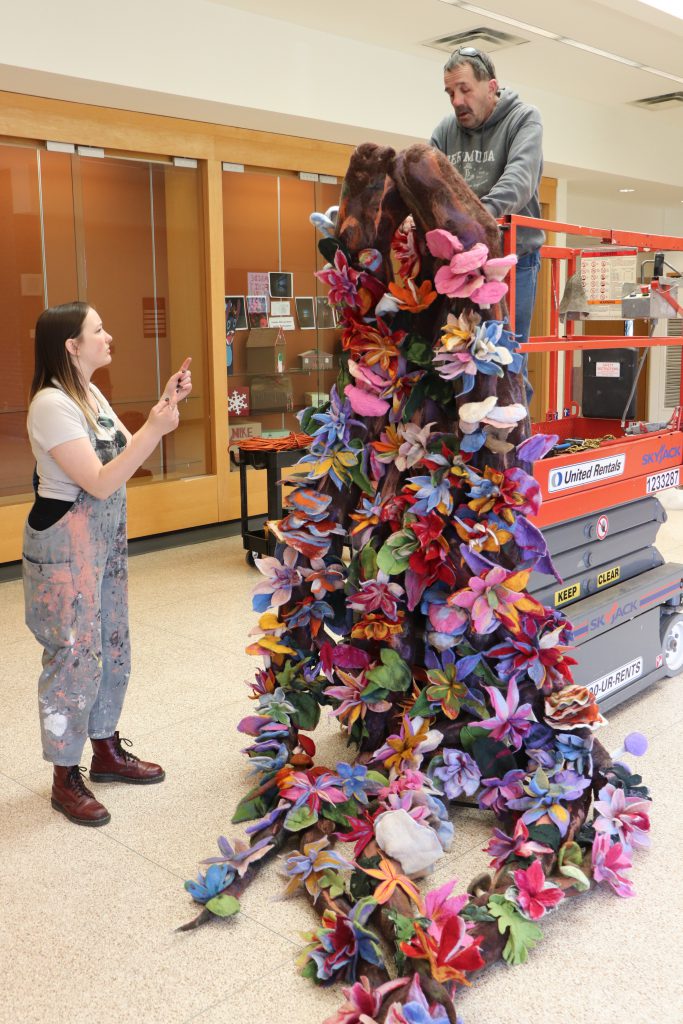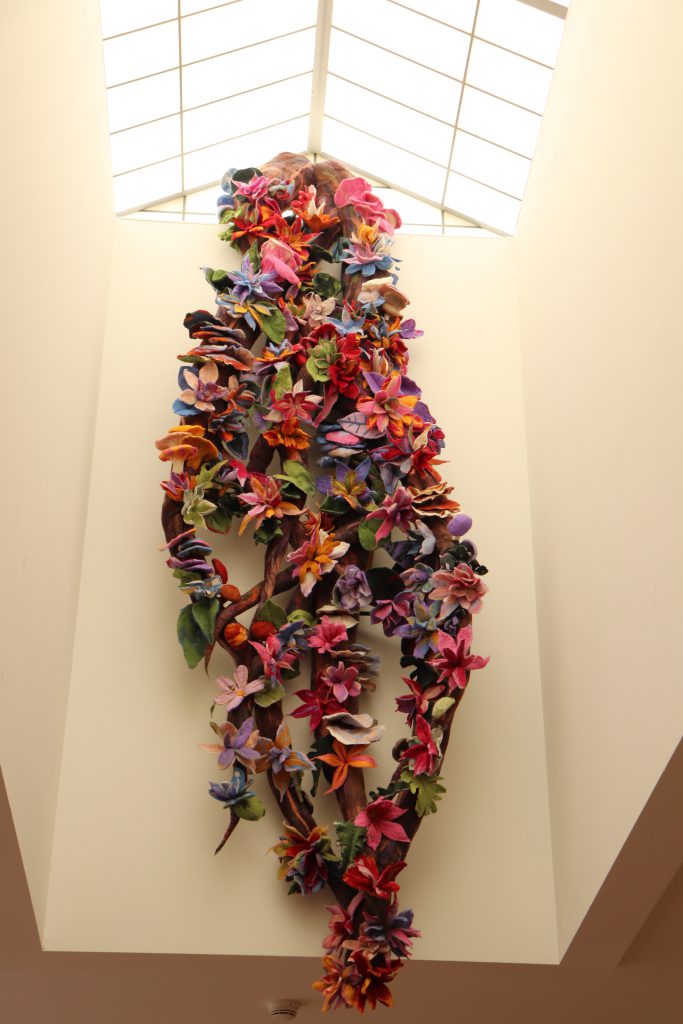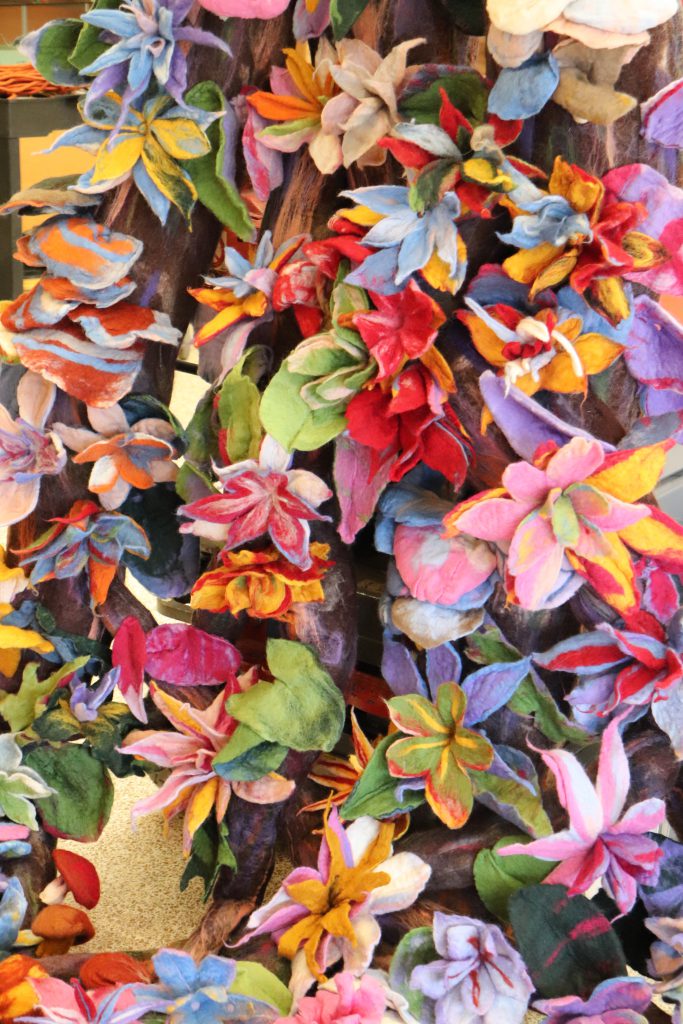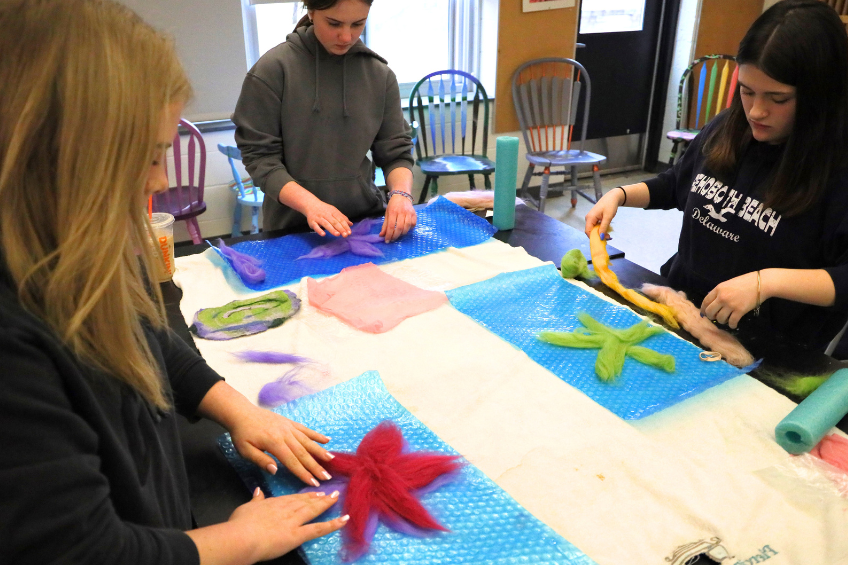This year, the ancient art of wet felting was taught to every Mohonasen High School student enrolled in an art class. Students were taught by Capital Region artist Mallory Zondag, a mixed-media fiber artist and artist educator. Wet felting is the process of using a combination of friction and agitation, and soap and water to make felt out of wool fibers.
Over the course of a month, Zondag visited classes and taught students how to transform their balls of wool into beautiful vegetation to create a communal “Living Wall.”
Students started by creating the felt by rolling the wool fibers with soap and water, and as they created friction, the fibers became a functional art medium. From there, students upped their skills, learning different felt weaving techniques.
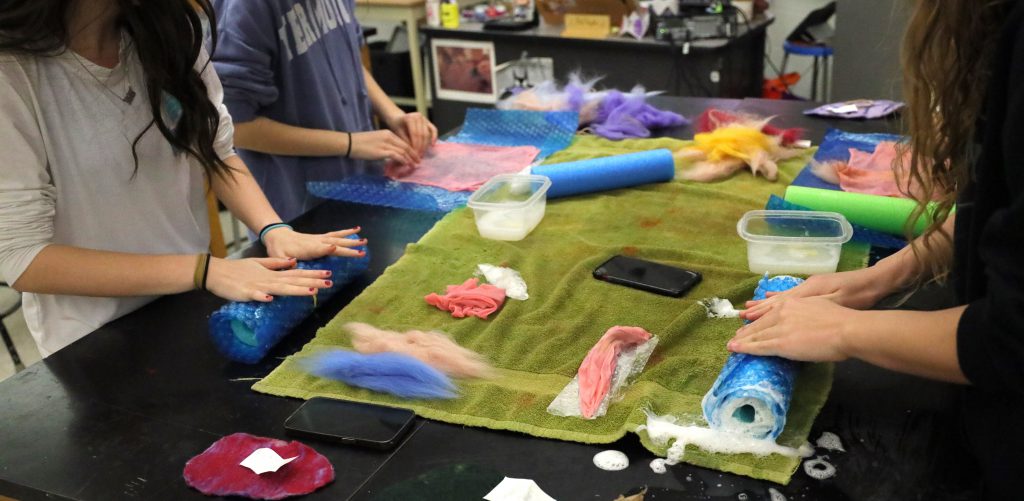
As students gained confidence in their skills, Zondag challenged them to think beyond traditional flat felting. With her guidance, they ventured into the realm of three-dimensional forms. They learned how to sculpt the wool felt into lifelike flowers, intricate tropical leaves and mushrooms.
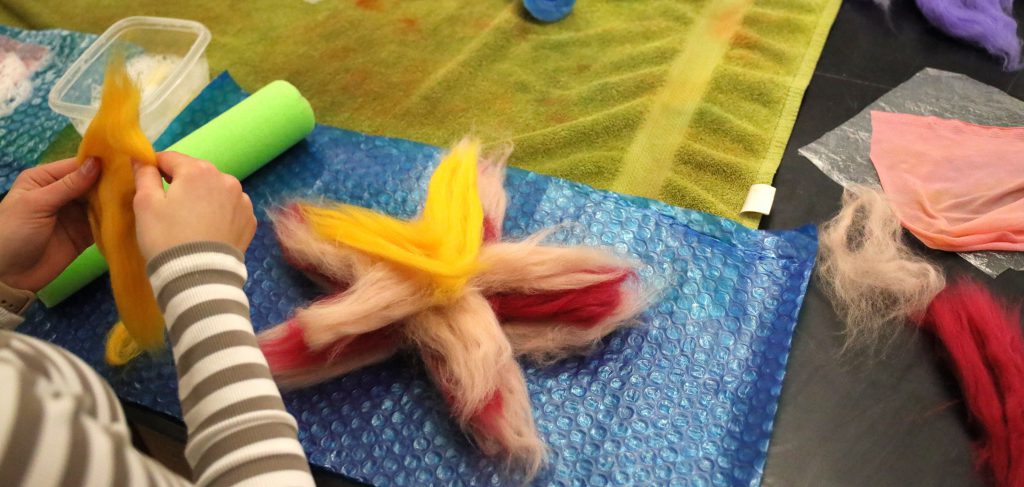
By the end of the month, the classrooms were transformed into a forest, each piece reflecting the individuality and creativity of its maker.
When the students were done, Zondag took their work back to her studio and sewed the pieces on a large root system also made from wool.
“Seeing the piece come together was a beautiful thing,” said Zondag. “I see these pieces as community gardens, we all work together to create something bigger, better and more beautiful. It’s how nature works as well,” she added.
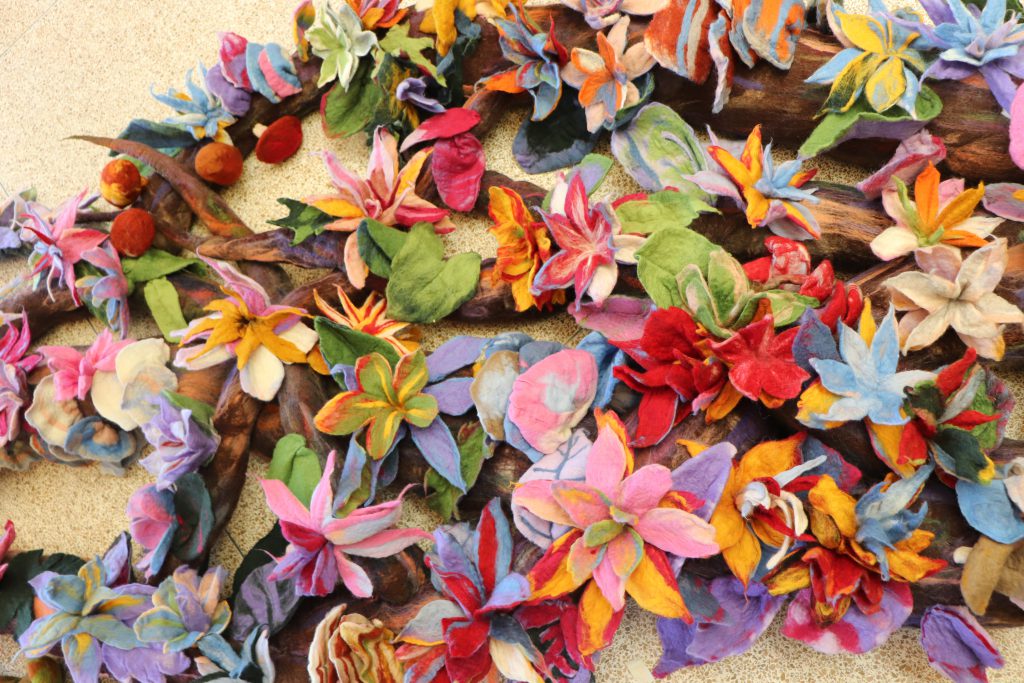
The idea for this project came from high school art teacher, Michael York. “Spring was coming and I believed the sky light area in the gallery needed some color,” said York. “I had heard about Mallory’s work and it was the perfect fit,” he added.
The piece is currently on display in the W.B. Haessig Art Gallery at Mohonasen High School and can be viewed during the District Art Show on May 21, from 4 – 6 p.m. in the gallery.
This project was funded by a grant provided by the Mohonasen Foundation of Excellence.
